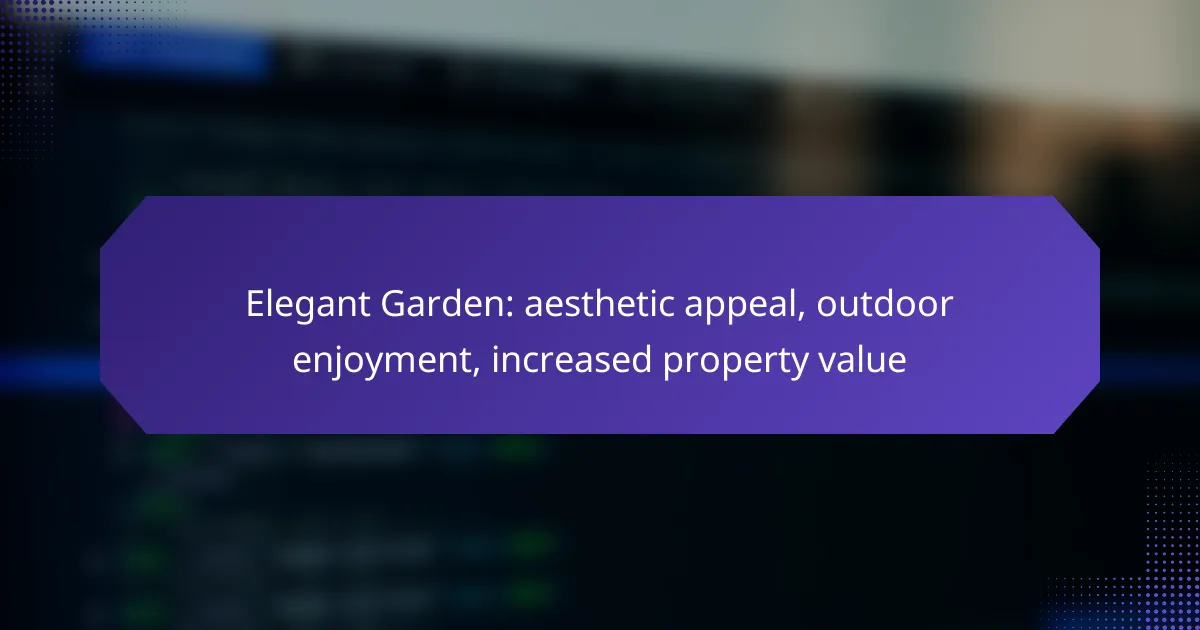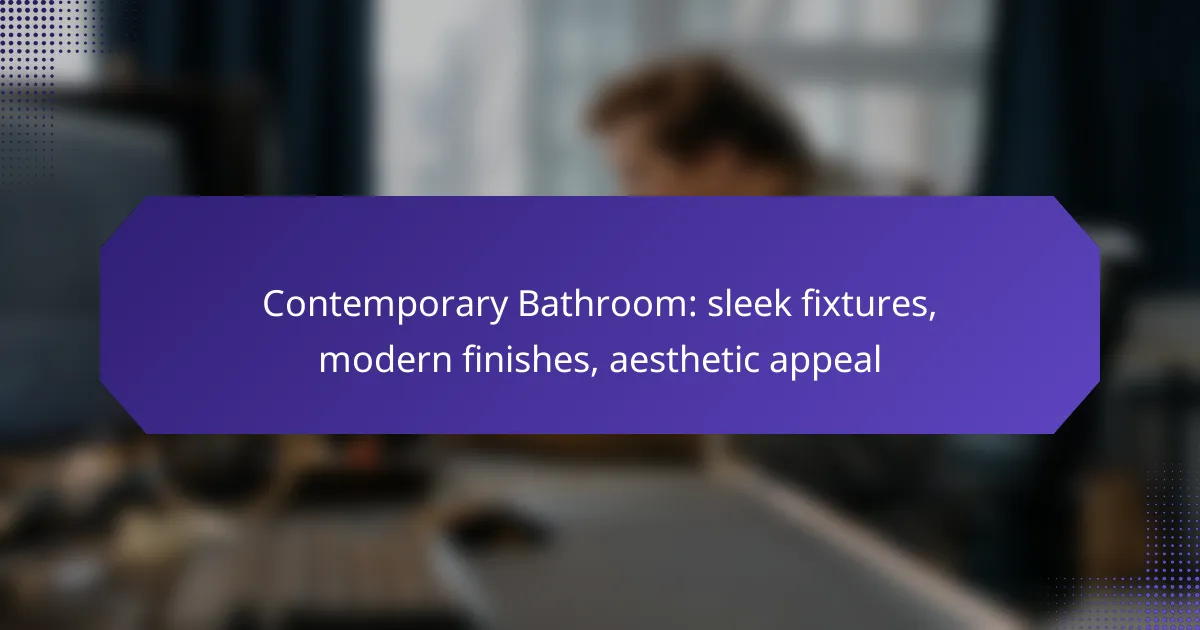An elegant garden serves as a beautiful extension of your home, enhancing its aesthetic appeal and providing a serene outdoor space for relaxation and enjoyment. By incorporating thoughtful design elements and quality plant selections, you can create a captivating environment that not only elevates your property’s charm but also increases its market value. A well-crafted garden invites both tranquility and potential buyers, making it a valuable investment for any homeowner.

How can an elegant garden enhance property value in Canada?
An elegant garden can significantly enhance property value in Canada by improving aesthetic appeal, creating inviting outdoor spaces, and attracting potential buyers. A well-designed garden not only elevates the visual charm of a home but also contributes to a higher market price.
Increased curb appeal
An elegant garden boosts curb appeal by presenting a well-maintained and visually appealing exterior. This first impression can be crucial, as homes with attractive landscaping often stand out in the neighborhood and draw more attention from passersby.
Consider incorporating native plants, colorful flowers, and neatly trimmed hedges to create a welcoming entrance. Simple features like pathways, decorative stones, or a small water feature can further enhance the overall look without requiring extensive investment.
Attracting potential buyers
A beautifully landscaped garden can attract potential buyers by showcasing the outdoor living potential of the property. Buyers often envision themselves enjoying the space for relaxation, entertaining, or gardening, which can make the home more appealing.
In Canada, where outdoor living is valued, features like patios, decks, or outdoor kitchens can significantly increase interest. Highlighting these elements during showings can help buyers see the full potential of the property.
Improved outdoor living space
An elegant garden enhances outdoor living space, making it a functional extension of the home. Well-designed gardens can include seating areas, dining spaces, or play areas, allowing homeowners to enjoy their yards year-round.
To maximize this space, consider adding features like pergolas, fire pits, or raised garden beds. These elements not only improve usability but also add to the overall aesthetic, making the property more desirable and potentially increasing its market value.
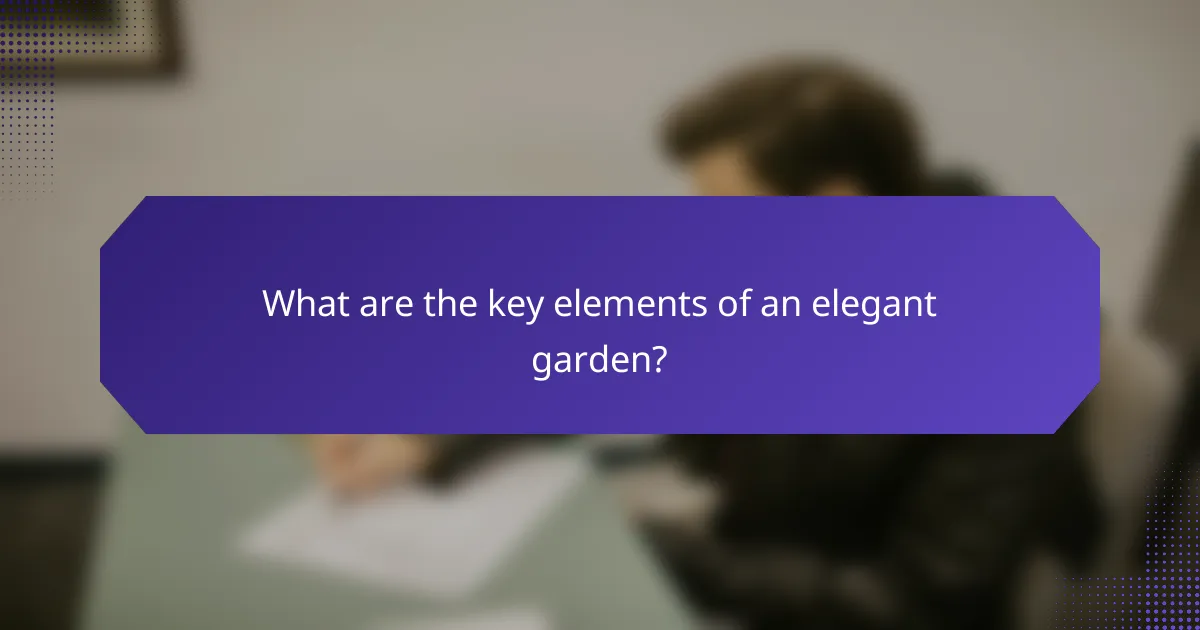
What are the key elements of an elegant garden?
An elegant garden combines aesthetic appeal, functional design, and quality plant selection to create an inviting outdoor space. Key elements include well-designed landscaping, carefully chosen plants, and functional outdoor features that enhance enjoyment and property value.
Well-designed landscaping
Well-designed landscaping is essential for creating an elegant garden. It involves the strategic placement of pathways, flower beds, and seating areas to promote flow and accessibility. Consider using natural materials like stone or wood for pathways to enhance the garden’s visual appeal.
Incorporating elements such as raised beds or terracing can add dimension and interest. Aim for a balanced layout that harmonizes with the surrounding environment, ensuring that the design complements the architecture of your home.
Quality plant selection
Quality plant selection is crucial for an elegant garden, as it directly impacts the overall aesthetic and health of the space. Choose plants that thrive in your local climate and soil conditions, focusing on a mix of perennials, annuals, and shrubs for year-round interest.
Consider the color, texture, and height of plants to create visual harmony. Grouping plants with similar water and sunlight needs can simplify maintenance and enhance the garden’s beauty. Native plants are often a great choice, as they require less care and support local wildlife.
Functional outdoor features
Functional outdoor features enhance the usability of an elegant garden while adding to its charm. Consider including elements like seating areas, fire pits, or water features that encourage outdoor enjoyment. These features should be integrated into the overall design to maintain a cohesive look.
When selecting outdoor furniture, opt for durable materials that can withstand the elements. Additionally, lighting can play a significant role in extending the usability of the garden into the evening, creating a warm and inviting atmosphere.
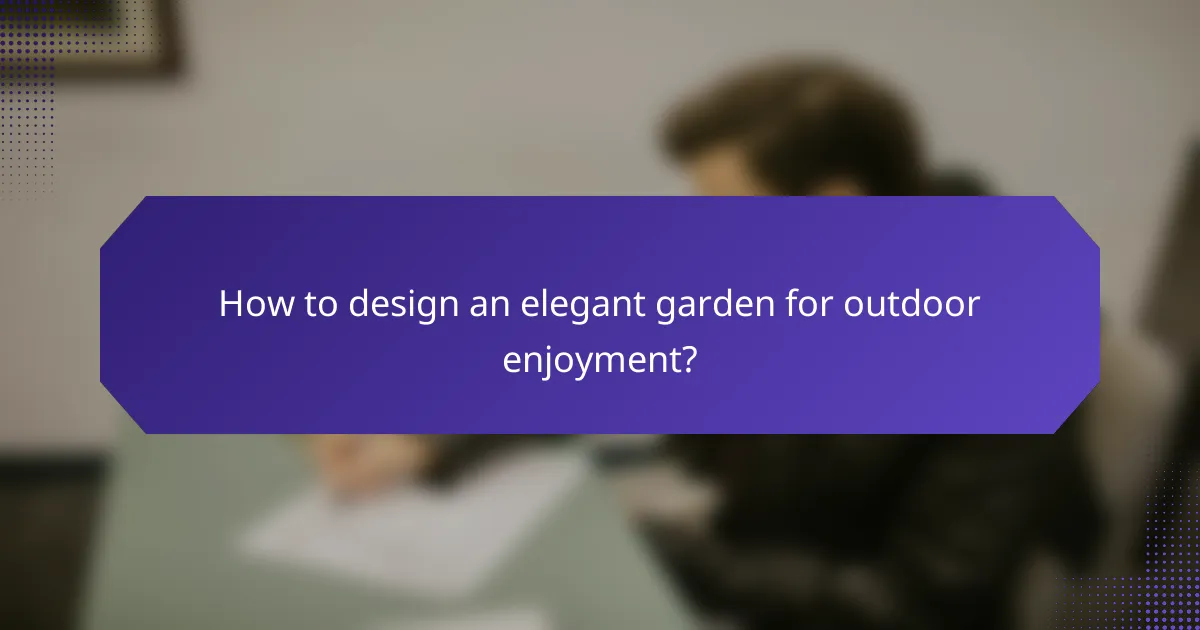
How to design an elegant garden for outdoor enjoyment?
To design an elegant garden that enhances outdoor enjoyment, focus on creating a harmonious blend of aesthetics and functionality. Consider elements like seating, water features, and lighting to transform your garden into a welcoming retreat.
Creating comfortable seating areas
Comfortable seating areas are essential for enjoying your garden. Choose durable materials like teak or aluminum that can withstand outdoor conditions while providing comfort. Aim for a mix of seating options, such as benches, lounge chairs, and dining sets, to accommodate different activities.
Position seating to take advantage of views and natural shade, and consider adding cushions for extra comfort. A good rule of thumb is to allow at least 2-3 feet of space around seating to ensure easy movement and access.
Incorporating water features
Water features can significantly enhance the tranquility and beauty of your garden. Options range from small fountains to larger ponds, each providing soothing sounds and attracting wildlife. When selecting a water feature, consider the size of your garden and the maintenance required.
For smaller spaces, a wall-mounted fountain or a birdbath can be effective. Ensure that any water feature is positioned where it can be easily viewed and enjoyed from seating areas. Regular maintenance is crucial to keep the water clean and the feature functioning properly.
Using lighting for ambiance
Effective lighting can transform your garden into an enchanting space for evening enjoyment. Use a combination of ambient, task, and accent lighting to highlight pathways, seating areas, and key plants. Solar-powered lights are a practical choice for energy efficiency and ease of installation.
Consider installing string lights or lanterns for a cozy atmosphere, and use spotlights to draw attention to focal points like sculptures or trees. Aim for a balance of light and shadow to create depth and interest in your garden at night.
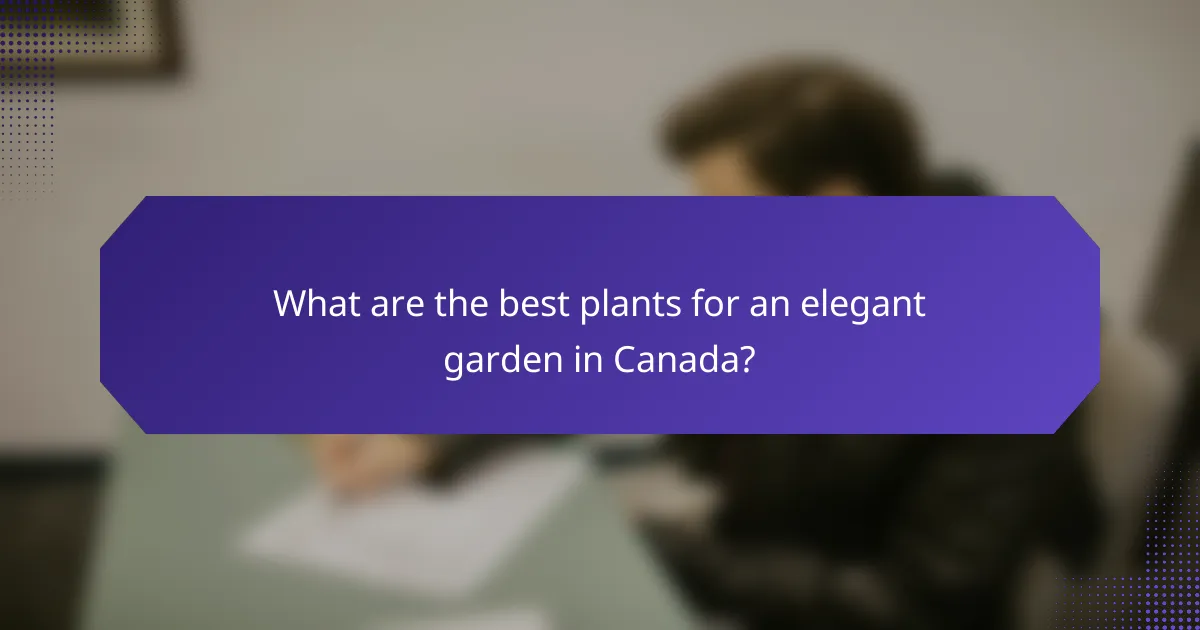
What are the best plants for an elegant garden in Canada?
For an elegant garden in Canada, consider a mix of perennials, native plants, and seasonal flowers that thrive in the local climate. These plants not only enhance aesthetic appeal but also contribute to outdoor enjoyment and can increase property value.
Perennials for long-lasting beauty
Perennials are a cornerstone of elegant gardens due to their ability to return year after year. Popular choices in Canada include peonies, daylilies, and hostas, which provide consistent blooms and foliage throughout the seasons.
When selecting perennials, consider their bloom times and growth habits to ensure a continuous display of color and texture. Grouping plants with similar water and sunlight needs can simplify maintenance and enhance visual impact.
Native plants for sustainability
Incorporating native plants into your garden supports local ecosystems and requires less maintenance. Species such as coneflowers, black-eyed Susans, and wild geraniums are well-adapted to Canadian climates and attract beneficial pollinators.
Using native plants can also reduce water usage and eliminate the need for chemical fertilizers and pesticides, making your garden more sustainable. Research local flora to find the best native options for your specific region in Canada.
Seasonal flowers for color
Seasonal flowers add vibrant color and variety to your garden throughout the year. In spring, tulips and daffodils can create a cheerful display, while summer favorites like zinnias and marigolds bring warmth and brightness.
To maintain a colorful garden, plan for staggered planting times and choose flowers that bloom at different intervals. This approach ensures that your garden remains visually appealing from early spring through late fall.

How to maintain an elegant garden?
Maintaining an elegant garden requires consistent care and attention to detail. Key practices include regular pruning, seasonal planting, and managing soil health to ensure vibrant growth and aesthetic appeal.
Regular pruning and weeding
Regular pruning and weeding are essential for maintaining an elegant garden. Pruning helps shape plants, encourages healthy growth, and removes dead or diseased branches. Aim to prune flowering shrubs after they bloom to promote new growth.
Weeding should be done frequently to prevent competition for nutrients and water. A good practice is to check your garden weekly and remove weeds before they set seed, which can save time and effort in the long run.
Seasonal planting strategies
Implementing seasonal planting strategies enhances the garden’s visual appeal throughout the year. Consider planting spring bulbs like tulips and daffodils for early blooms, while summer annuals such as petunias and marigolds can provide vibrant colors during warmer months.
In fall, consider planting perennials that will return year after year, adding structure and beauty. Always choose plants that are suited to your local climate to ensure they thrive and contribute to the garden’s elegance.
Soil health management
Soil health management is crucial for sustaining an elegant garden. Regularly test your soil to determine its pH and nutrient levels, which can guide your fertilization and amendment choices. Adding organic matter, such as compost, can improve soil structure and fertility.
Consider using mulch to retain moisture and suppress weeds, which helps maintain soil health. Aim for a layer of mulch about 5-10 cm thick around plants, ensuring it does not touch the stems to prevent rot.

What are the costs associated with creating an elegant garden?
Creating an elegant garden involves various costs that can vary widely based on design, materials, and labor. Key expenses include initial landscaping, ongoing maintenance, and potential enhancements that increase aesthetic appeal and property value.
Initial landscaping expenses
Initial landscaping expenses typically cover design, soil preparation, planting, and hardscaping elements like pathways and patios. Depending on the size and complexity of the garden, costs can range from a few hundred to several thousand dollars.
When planning your budget, consider hiring a landscape designer, which can add to initial costs but may lead to a more cohesive and visually appealing garden. Materials such as plants, mulch, and stones also contribute significantly to the overall expense.
To manage costs effectively, prioritize essential features and gradually add enhancements. For example, start with foundational plants and pathways before investing in decorative elements like fountains or elaborate lighting systems.






